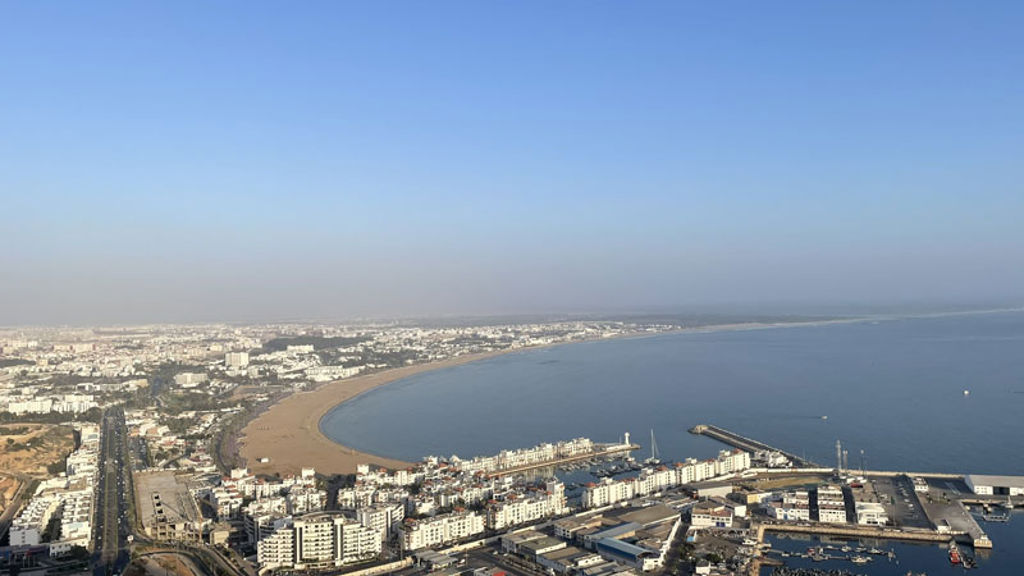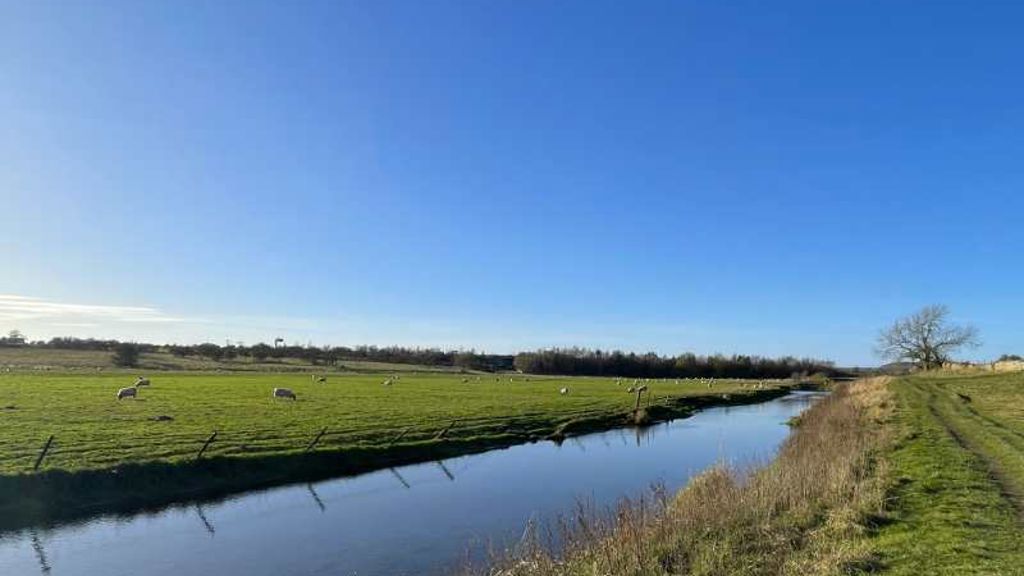Restoring natural ecosystems to help tackle the climate crisis
Yorkshire and North East carbon absorption

The Environment Agency’s (EA) national plan, eMission2030, sets out its commitment to reach net zero carbon by 2030. As part of this plan, the EA aims to reduce its emissions by 45% by 2030, and to responsibly offset the remaining emissions through land use changes and other approaches.
Arup’s climate and sustainability experts assessed whether it would be possible for the EA to meet its emissions targets by promoting greater carbon uptake potential (sequestration) through land use change interventions on its estate. Covering 2,933 hectares of land, we analysed the EA’s landholdings in Yorkshire and North East England to create a quantitative picture of current carbon sequestration, and to identify interventions that could improve natural habitats while absorbing more carbon.
Natural ecosystems are impressively effective at absorbing carbon dioxide, storing it in soils, sediment and vegetation. Based on this principle, our analysis identified interventions that could improve natural habitats while absorbing more carbon. Restoring these natural environments will not only support the EA in achieving its net zero aims, but will also enhance biodiversity to help tackle the climate crisis.
Unlocking carbon reductions
We analysed the EA’s landholdings in Yorkshire and North East England, which over 2,933 hectares of land, to create a quantitative picture of current carbon sequestration and to identify interventions that could improve habitats and absorb more carbon.
Our evidence-based approach measured the current carbon intensity of the EA’s different land types to determine a baseline on which our carbon absorption improvements could be framed. The results of our analysis showed that the EA could potentially improve the current carbon sequestration of the land by up to 350% in Yorkshire and North East England through various land use interventions.
Around 50% of the potential improvement in carbon sequestration would be provided by the creation of new wetland habitats and 20% would be derived from a mixture of coniferous and deciduous tree planting. Our afforestation interventions included the direct planting of woodland and the support of natural colonisation – or hybrid approaches between the two. Owing to the EA’s large agricultural landholdings, the most common intervention that we identified was regenerative agriculture, which involved increasing vegetation coverage, reducing grazing, and introducing crop rotations. Peatland habitats hold the largest capacity for storing carbon when compared to all of the UK’s other land types. Since these environments gradually sequester high quantities of carbon indefinitely, they could be prioritised for restoration.
Beyond peatland and agriculture, other categories of interventions were considered such as floodplain restoration, re-establishing vegetation, and rewetting drained vegetation. For wetlands, saltmarshes and other aquatic land types, a host of restorative interventions were identified to sequester carbon and increase biodiversity, including restoring flood plains and modifying river channels.
Comprehensive digital mapping of interventions
Drawing on integrated data from the EA and open sources, we examined the land’s different habitats using digital tools to better understand its context and features. This meant that we could consider other factors such as ecological character to assess the wider suitability and benefits of the proposed land use changes. To this end, we created a digital model to visualise land use changes alongside the data that we collected. This enabled us to visually communicate the suitability of the land and the potential interventions. By mapping out the landholdings, we were able to display the spatial constraints faced by these interventions, which increased the robustness of our carbon sequestration projections.
Working in collaboration with the EA, we created a methodology for estimating the carbon intensity of the land. To demonstrate the scale of change required, we created multiple scenarios showing different possibilities to absorb carbon and reduce emissions. This approach provided the EA with a detailed overview of the strategies that it could take to achieve its goals, while also enabling us to estimate the effectiveness of the potential land use changes.
From regional to national
Achieving ‘net zero’ greenhouse gas emissions is just one way that we will address the threat of climate change. Biodiversity loss poses another significant risk for the future health of our planet and society. Our analysis examined the wider benefits of the proposed land use changes, including air quality improvements, biodiversity gains, noise reduction, and increased recreational space.
The consideration of wider benefits and the success of our carbon absorption assessment in Yorkshire and North East England mean that the methodology has also now been implemented on a national scale. As part of this expanded scope, our team assessed all of the EA’s landholdings – equating to a total of 16,612 hectares – to better understand their current carbon intensity and to inform its future sequestration strategy. This second phase set the foundations for developing the EA’s strategy to deliver scalable projects that restore habitats and increase carbon uptake, while also enhancing biodiversity and community amenity – all of which will drive the organisation’s aim to reach net zero.
Arup have responded fantastically to our brief, developing a replicable methodology to help us to understand our current carbon baseline and what we could achieve across our land holdings. This work will be invaluable in helping to develop our future strategy.
Andrew Coen
Project Executive, Environment Agency
What we delivered
-
Our analysis identified 250% additional improvement in carbon sequestration above baseline levels for existing land use
-
In total, we assessed 2,933 hectares of Environment Agency land
-
We developed a digital model to visualise land use changes, highlighting land suitability and potential interventions
Get in touch with our team
Projects
Explore more climate & sustainability projects

Shaping a sustainable, inclusive and thriving future for Agadir, Morocco
Agadir Green City Action Plan, Morocco

Improving water security and sanitation for millions in urban India
Australia-India Water Security Initiative (AIWASI), India

Promoting climate resilient flood defence and development through nature-based solutions
Lower Darent Riverside Strategy, United Kingdom

Wetland habitat restoration at a landscape scale
Great North Fen – Restoring the Durham Carrs, United Kingdom
Get in touch with us
If you'd like to speak to one of our climate experts about any of the issues raised on this page or a potential collaboration then please get in touch by completing the form.

